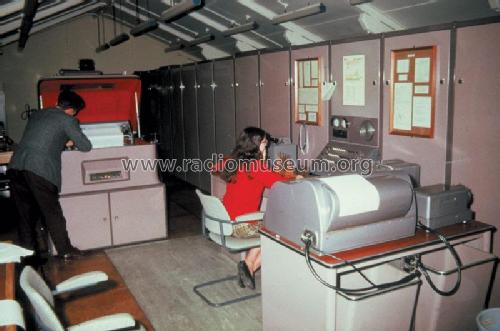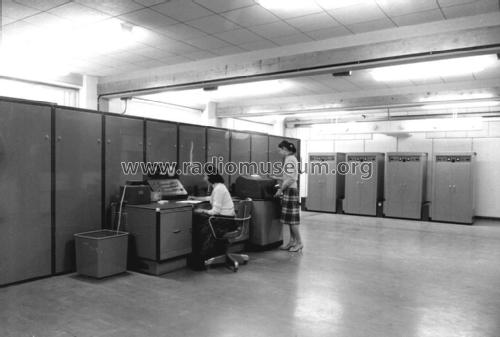Mercury (Tube Computer)
Ferranti, GB
- País
- Gran Bretaña (GB)
- Fabricante / Marca
- Ferranti, GB
- Año
- 1957–1961
- Categoría
- Signal Processing and Computing
- Radiomuseum.org ID
- 281375
- Numero de valvulas
- 2000
- Gama de ondas
- - no hay
- Tensión de funcionamiento
- Red: Corriente alterna (CA, Inglés = AC)
- Altavoz
- - - No hay salida de sonido.
- Material
- Metálico
- de Radiomuseum.org
- Modelo: Mercury - Ferranti, GB
- Forma
- Formas varias descritas en notas aparte.
- Anotaciones
-
Mercury was an early thermionic valve (vacuum tube) computer built by Ferranti, Ltd of Great Britain based on the second design of the University of Manchester.
The first Mercury was delivered on August 1957 and eventually 19 of them would be built.With a clock of 1MHz it featured a parallel architecture of 40 bits, with 10 bit words and 5 bits custom charset. It had 100 instructions and as an outstanding characteristic (and uncommon for the time) it was capable of working with floating point numbers in hardware, something that made it ideal for scientific usage.
It had 4096 words of core memory and up to 4 drums of 16K words each.
Hardware consisted of 14 racks with a monitoring console desk, totalling about 2000 valves (roughly EF91, EL81, ECC88, A2134) and about 2000 germanium crystal diodes, something that gave a much stronger design when compared to the Ferranti Mark I which relied in diode valves. The console with the switches allowed direct access to the program sequences, and featured small CRTs to debug the registers in the form of waveforms.
It used 5 racks of power supplies with motogenerators to isolated the computer from the mains instabilities.
Basic input was based on Ferranti TR5 5 bit paper tape optical readers of up to 300 ch/sec, and output was with a high speed tape puncher Creed 25.
It was normally operated with Creed teleprinter either model 54 or 75, using a custom charset and typewheel.
Additionally, as done at the University of Manchester, it could be connected to a graphical output on CRT for making dot matrix graphics photography.
The only surviving partial unit is located at the National Museums of Scotland.
- Autor
- Modelo creado por Javier Albinarrate. Ver en "Modificar Ficha" los participantes posteriores.
- Otros modelos
-
Donde encontrará 219 modelos, 125 con imágenes y 166 con esquemas.
Ir al listado general de Ferranti, GB

